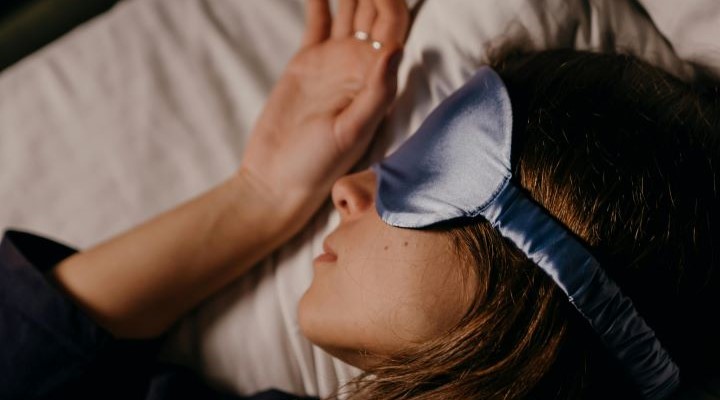
The Best Sleep Position for Recovery and Spine Health
What if the key to faster physical recovery wasn’t just in your workouts or your diet, but in the way you sleep? While it may sound simple, your sleeping position can either support or sabotage your body’s healing process. From chronic back issues to sore muscles after intense training, how you sleep matters more than most people realize.
When we think about rest and recovery, sleep often gets reduced to quantity — how many hours we get. However, quality plays an equally crucial role, and a major part of sleep quality stems from your posture throughout the night. That’s where the concept of the best sleeping posture for muscle recovery enters the conversation, not just as a preference but as a strategic choice.
How the Way You Sleep Shapes the Way You Heal?
Many people fall into a habitual sleeping position, unaware of how it might affect their spine, joints, and muscles. The spine has a natural curve, and any misalignment during sleep can lead to stiffness, pain, or even injuries over time. Moreover, sleep posture affects how well your muscles relax and repair. Thus, misalignment adds tension, while proper alignment promotes healing.
According to the National Sleep Foundation, nearly 63% of adults report waking up with back or neck pain at least once a week. That’s not due to aging or poor mattresses. It’s often a matter of poor positioning that places unnecessary strain on the spine.
The Best Sleeping Positions to Support Recovery and Spinal Health
Let’s start with side sleeping. This is widely regarded as the best sleeping posture for muscle recovery, particularly if done with a slight bend in the knees and a pillow between the legs. It promotes better spinal alignment and reduces pressure points. Athletes often benefit from this position because it minimizes overnight strain on the lower back and hips.
Then, there is back sleeping, which also ranks high (if done correctly). While sleeping in this posture, using a supportive pillow under the knees helps maintain the spine’s natural curve. This position distributes body weight evenly and is one of the most effective sleep positions to improve spine alignment, especially for those dealing with lumbar discomfort.
Finally, there’s stomach sleeping, a posture that’s popular but problematic. So, it’s rarely ideal for people facing muscle tension and spinal issues. Reason? It flattens the spine’s natural curve and forces the neck into a twisted angle for hours, which can strain muscles and irritate nerves. While some people feel it helps with snoring or mild sleep apnea, it’s generally the least supportive option for long-term spinal health or recovery. So, for anyone recovering from an injury or managing chronic pain, this posture is best avoided.
Therefore, if you're looking for how to sleep to reduce back pain and support full-body recovery, side sleeping and back sleeping are your best options.
Adding Support: Pillows and Mattresses Matter Too
Even the most perfect position can fall short without the right support system. A medium-firm mattress paired with pillows that support the head, neck, and knees can make a significant difference. Think of your sleep setup like a suspension bridge. It needs balance at every point to remain stable. Without proper support, the bridge (your spine) sags and strains.
Here’s a simple comparison.
|
Sleep Position |
Spine Alignment |
Muscle Recovery |
Ideal for Back Pain? |
|
Side (with pillow) |
Excellent |
Excellent |
Yes |
|
Back (knees elevated) |
Good |
Very Good |
Yes |
|
Stomach |
Poor |
Poor |
No |
How to Transition into Better Sleep Habits?
Changing your sleep position isn't always easy. It’s like retraining a habit that’s been with you for decades. However, small changes add up. Start by adjusting your pillow placement or using a body pillow to stabilize your posture. Over time, the body adapts.
Understanding how to sleep to reduce back pain goes beyond avoiding bad positions; it’s about making sleep an active part of your wellness routine. Try tracking how you feel in the morning after sleeping in different postures. That simple reflection can lead to powerful insights.
Final Thoughts
To conclude, think of your sleep like a recovery ritual. The position you choose each night sends a message to your body, either one of tension or one of restoration. Thus, optimizing sleep posture isn’t about comfort alone; it’s a form of silent therapy, quietly working while you rest. Align your nights, and your days will be grateful to you!
If you’re ready to wake up refreshed and recovered, join NWFA!
At the National Wellness & Fitness Association, we believe great sleep is the foundation of a healthier and more empowered life. Therefore, from exclusive member benefits to expert insights on wellness, we’re here to help you recover smarter and live stronger DAY and NIGHT.
Explore how NWFA can support your journey to better sleep, better health, and better living by
- Calling us at 1-800-992-8044
Or visiting: www.nationalwellnessandfitness.com